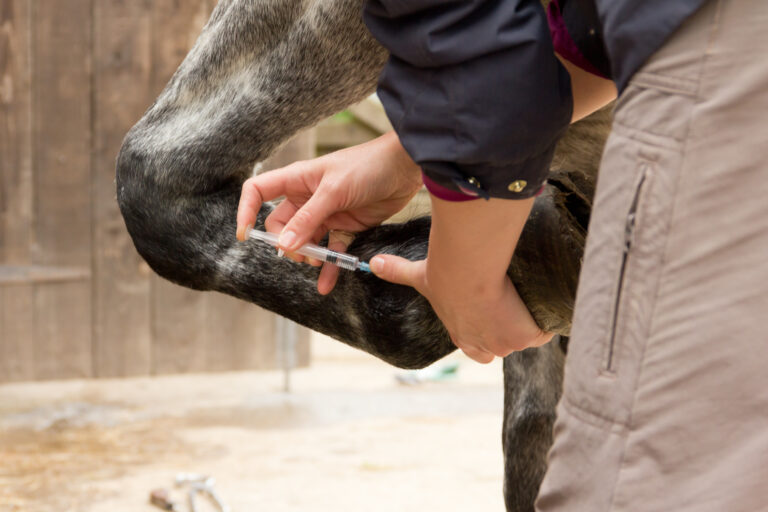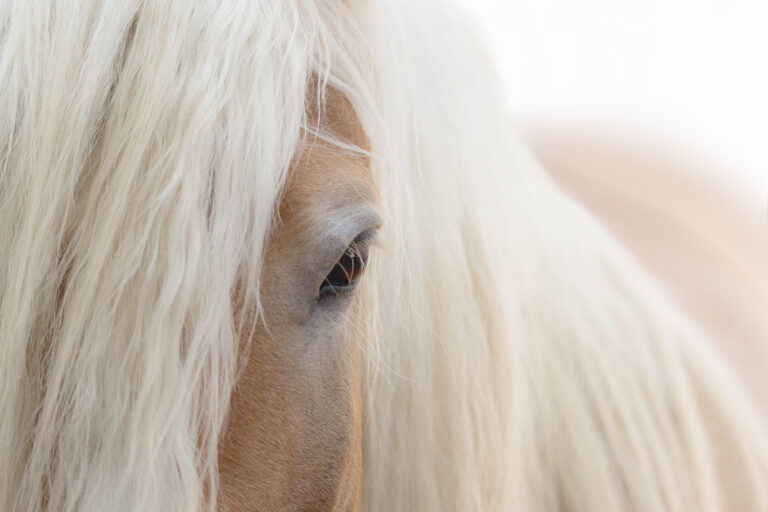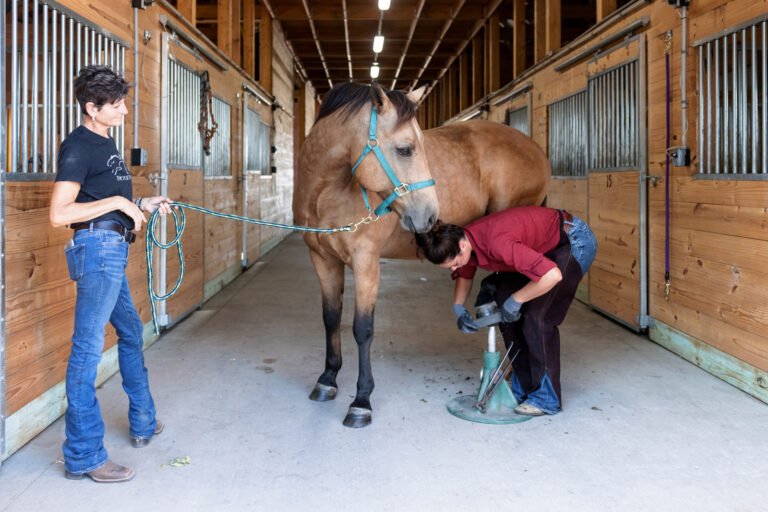
The use of sodium-glucose cotransporter 2 inhibitors (SGLT2i) has shown some success in limiting postprandial insulin responses to prevent diet-induced laminitis. In experimental conditions, laminitis is induced with exogenous administration of insulin. While it’s not clear how exactly hyperinsulinemia induces laminitis, “insulin may stimulate insulin-like growth factor-1 receptors within the lamellae resulting in cellular proliferation, weakening, and subsequent lamellar failure,” said the authors of a recent study out of Australia. Their team examined the use of ertugliflozin, an SGLT2i, to manage horses with laminitis and hyperinsulinemia.
Study on Ertugliflozin to Manage Laminitis and Hyperinsulinemia
The study involved 51 horses of various breeds, aged 4-28 years, that received 0.05 mg/kg ertugliflozin administered orally once daily for at least 30 days. Fifteen horses received with 5 mg or 15 mg tablets of ertugliflozin (Steglatro), while 36 horses received a compounded ertugliflozin paste with 5 mg/ml. The study did not include a control group. Ertugliflozin potentially increases glucose excretion through urine. It is rapidly absorbed to reach peak plasma concentrations by one hour (in dogs and rats).
Horses with insulin concentrations above the laboratory reference limit (> 40 mIU/l) were selected to receive ertugliflozin if they had not improved with diet and management over at least a six-week period (range of six to 304 weeks) and had not received supplemental medications such as metformin or levothyroxine. Diet changes included low-sugar hay fed at 1-1.5% body weight for at least six weeks prior to ertugliflozin treatment. A dozen horses were also diagnosed with PPID and treated with pergolide. Of the 51 horses in the study, 33 also received phenylbutazone at the time ertugliflozin treatment began.
Study Results
Insulin concentrations exceeded 300 mIU/l prior to treatment; after 30 days of ertugliflozin, the highest insulin concentration was 233 mIU/l. Tablet and paste formulations achieved similar results. Samples obtained between Days 60 and 240 identified insulin median values of 32 mIU/l. However, in eight horses, insulin increases remained beyond 30 days. The authors stated, “while SGLT2 accounts for 90% of glucose reabsorption, during SGLT2 inhibition, glucose reabsorption reduces to 40-50% due to a compensatory role of SGLT1” that also normally plays a lesser role in glucose reabsorption. They also suspected some owners did not adhere to recommended dietary management strategies.
Triglyceride levels increased in 88% of the horses at Day 30, with no signs of hyperlipemia. Veterinarians should closely monitor horses remaining on treatment for elevated triglyceride levels and lipidosis.
Laminitis scores (ranging from 0 to 12) improved from a median of 10 prior to treatment to a median of 1 after 30 days of treatment with ertugliflozin and remained below 2 from Day 30 onward. Phenylbutazone was discontinued within seven to 14 days of starting ertugliflozin. The authors said they were impressed by the speed and magnitude of improvement of clinical laminitis. The study horses had no new episodes while on ertugliflozin.
Ninety-four percent of the horses lost 0.6-19% of the body weight after 30 days of treatment. The ones that lost the most weight were the most obese.
Ten horses developed polyuria/polydipsia, possibly due to osmotic diuresis associated with urinary glucose excretion leading to volume depletion. However, none of the horses developed clinical dehydration or hypovolemia. Horses receiving ertugliflozin should have ample water access.
Long-Term Follow-Up
Long-term follow-up showed 33 horses remained on treatment due to increased insulin concentrations or elevations that occurred when treatment stopped. All treated horses were sound and returned to previous exercise demands (prior to laminitis) without need for analgesic medications. The 18 horses that did not continue on treatment improved sufficiently with controlled diet and management.
Reference
Sundra T, Kelty E, Rendle D. Preliminary observations on the use of ertugliflozin in the management of hyperinsulinemia and laminitis in 51 horses: A case series. Equine Veterinary Education Oct 2022; doi: 10.1111/eve.13738
Stay in the know! Sign up for EquiManagement’s FREE weekly newsletters to get the latest equine research, disease alerts, and vet practice updates delivered straight to your inbox.




